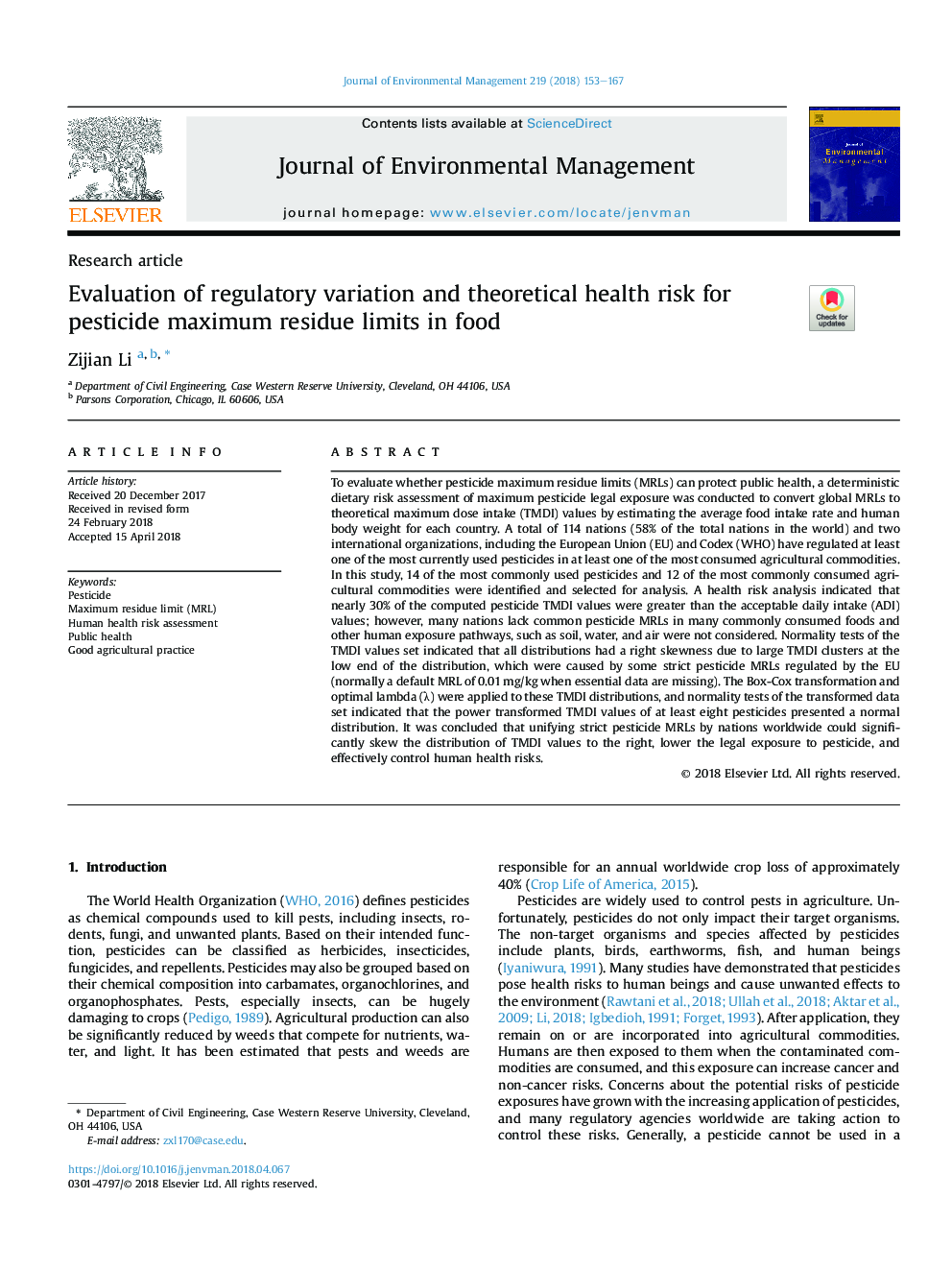| کد مقاله | کد نشریه | سال انتشار | مقاله انگلیسی | نسخه تمام متن |
|---|---|---|---|---|
| 7476669 | 1485199 | 2018 | 15 صفحه PDF | دانلود رایگان |
عنوان انگلیسی مقاله ISI
Evaluation of regulatory variation and theoretical health risk for pesticide maximum residue limits in food
ترجمه فارسی عنوان
ارزیابی تغییرات نظارتی و خطر تئوری بهداشتی برای محدودیت حداکثر مانع از آفت کش ها در غذا
دانلود مقاله + سفارش ترجمه
دانلود مقاله ISI انگلیسی
رایگان برای ایرانیان
کلمات کلیدی
موضوعات مرتبط
مهندسی و علوم پایه
مهندسی انرژی
انرژی های تجدید پذیر، توسعه پایدار و محیط زیست
چکیده انگلیسی
To evaluate whether pesticide maximum residue limits (MRLs) can protect public health, a deterministic dietary risk assessment of maximum pesticide legal exposure was conducted to convert global MRLs to theoretical maximum dose intake (TMDI) values by estimating the average food intake rate and human body weight for each country. A total of 114 nations (58% of the total nations in the world) and two international organizations, including the European Union (EU) and Codex (WHO) have regulated at least one of the most currently used pesticides in at least one of the most consumed agricultural commodities. In this study, 14 of the most commonly used pesticides and 12 of the most commonly consumed agricultural commodities were identified and selected for analysis. A health risk analysis indicated that nearly 30% of the computed pesticide TMDI values were greater than the acceptable daily intake (ADI) values; however, many nations lack common pesticide MRLs in many commonly consumed foods and other human exposure pathways, such as soil, water, and air were not considered. Normality tests of the TMDI values set indicated that all distributions had a right skewness due to large TMDI clusters at the low end of the distribution, which were caused by some strict pesticide MRLs regulated by the EU (normally a default MRL of 0.01â¯mg/kg when essential data are missing). The Box-Cox transformation and optimal lambda (λ) were applied to these TMDI distributions, and normality tests of the transformed data set indicated that the power transformed TMDI values of at least eight pesticides presented a normal distribution. It was concluded that unifying strict pesticide MRLs by nations worldwide could significantly skew the distribution of TMDI values to the right, lower the legal exposure to pesticide, and effectively control human health risks.
ناشر
Database: Elsevier - ScienceDirect (ساینس دایرکت)
Journal: Journal of Environmental Management - Volume 219, 1 August 2018, Pages 153-167
Journal: Journal of Environmental Management - Volume 219, 1 August 2018, Pages 153-167
نویسندگان
Zijian Li,
